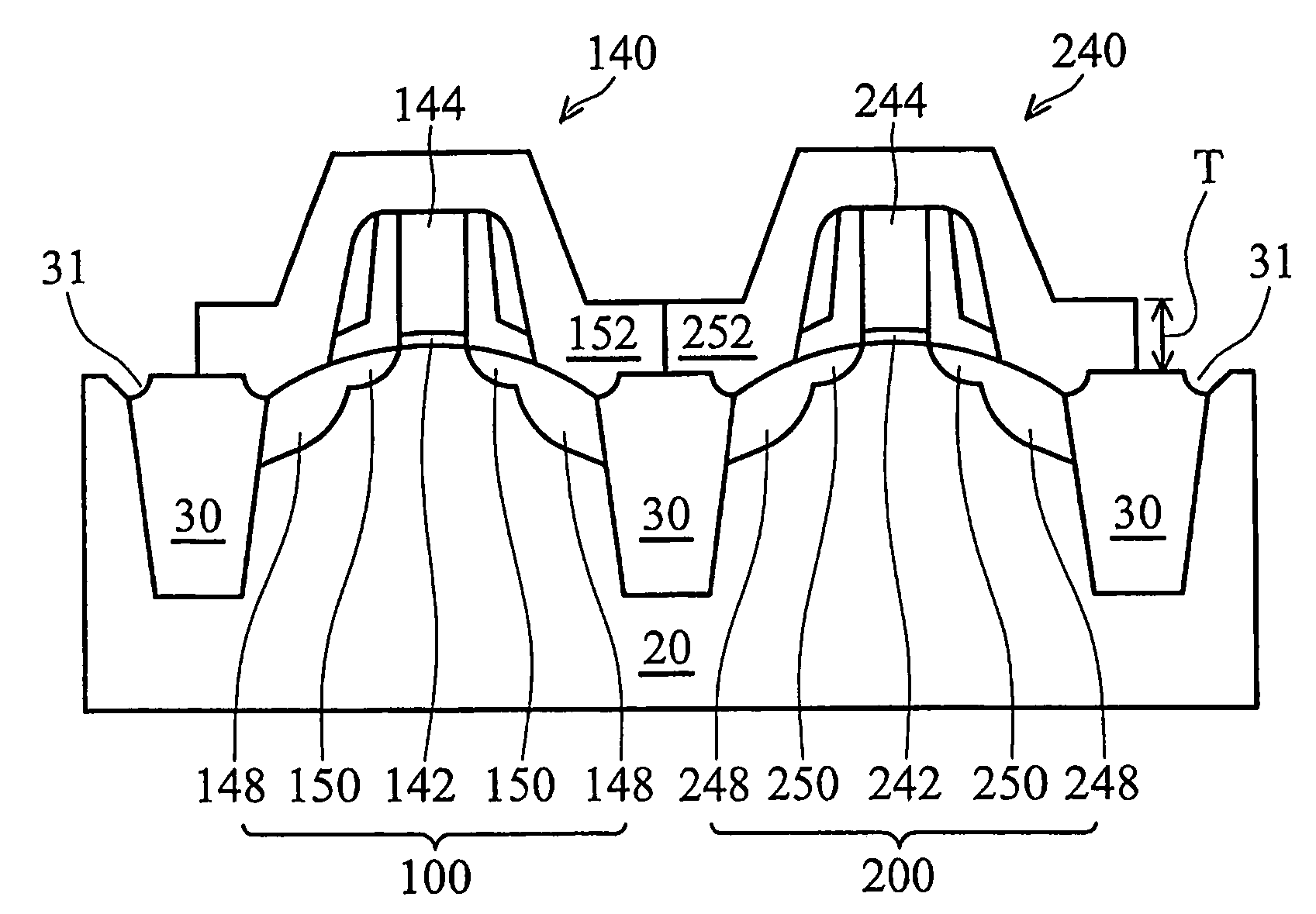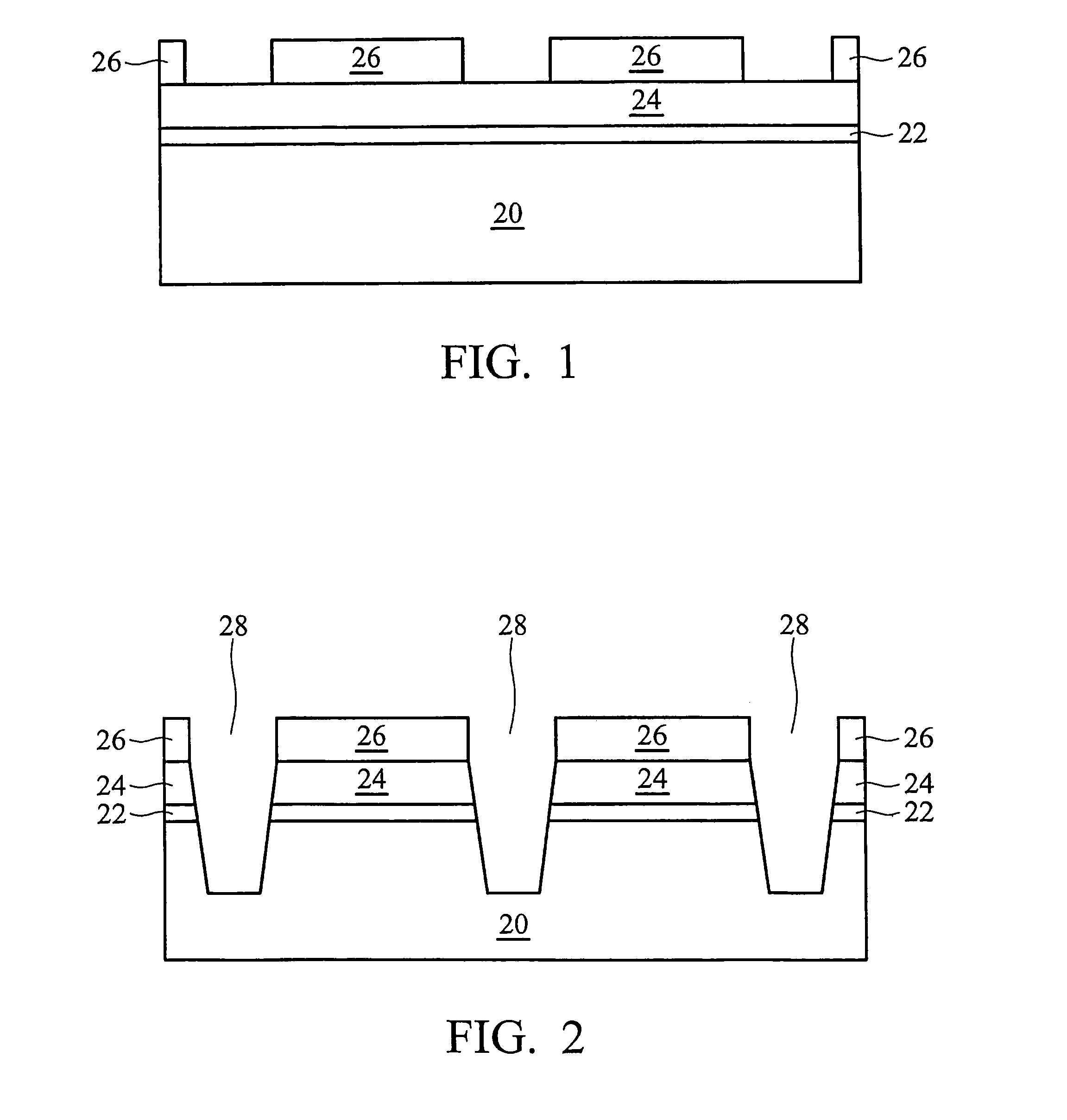Diffusion topography engineering for high performance CMOS fabrication
a technology of cmos and topography engineering, applied in the direction of semiconductor/solid-state device manufacturing, semiconductor devices, electrical equipment, etc., can solve the problems of sti formation process typically creating undesirable divots, reducing the stress of mos devices, and increasing the difficulty of profile control
- Summary
- Abstract
- Description
- Claims
- Application Information
AI Technical Summary
Benefits of technology
Problems solved by technology
Method used
Image
Examples
Embodiment Construction
[0019]The making and using of the presently preferred embodiments are discussed in detail below. It should be appreciated, however, that the present invention provides many applicable inventive concepts that can be embodied in a wide variety of specific contexts. The specific embodiments discussed are merely illustrative of specific ways to make and use the invention, and do not limit the scope of the invention.
[0020]According to silicon migration theory, hydrogen annealing can reduce the number of dangling bonds of silicon, resulting in migration of surface atoms so as to form a surface with a low surface energy, a reduced surface area and a low stress level. Diffusion topography engineering (DTE), as will be subsequently discussed in the preferred embodiments of the present invention, therefore, can be performed to create favorable topographies for the metal-oxide-semiconductor (MOS) devices. This in turn improves the stress in the channel regions of MOS devices, particularly the ...
PUM
 Login to View More
Login to View More Abstract
Description
Claims
Application Information
 Login to View More
Login to View More - R&D
- Intellectual Property
- Life Sciences
- Materials
- Tech Scout
- Unparalleled Data Quality
- Higher Quality Content
- 60% Fewer Hallucinations
Browse by: Latest US Patents, China's latest patents, Technical Efficacy Thesaurus, Application Domain, Technology Topic, Popular Technical Reports.
© 2025 PatSnap. All rights reserved.Legal|Privacy policy|Modern Slavery Act Transparency Statement|Sitemap|About US| Contact US: help@patsnap.com



